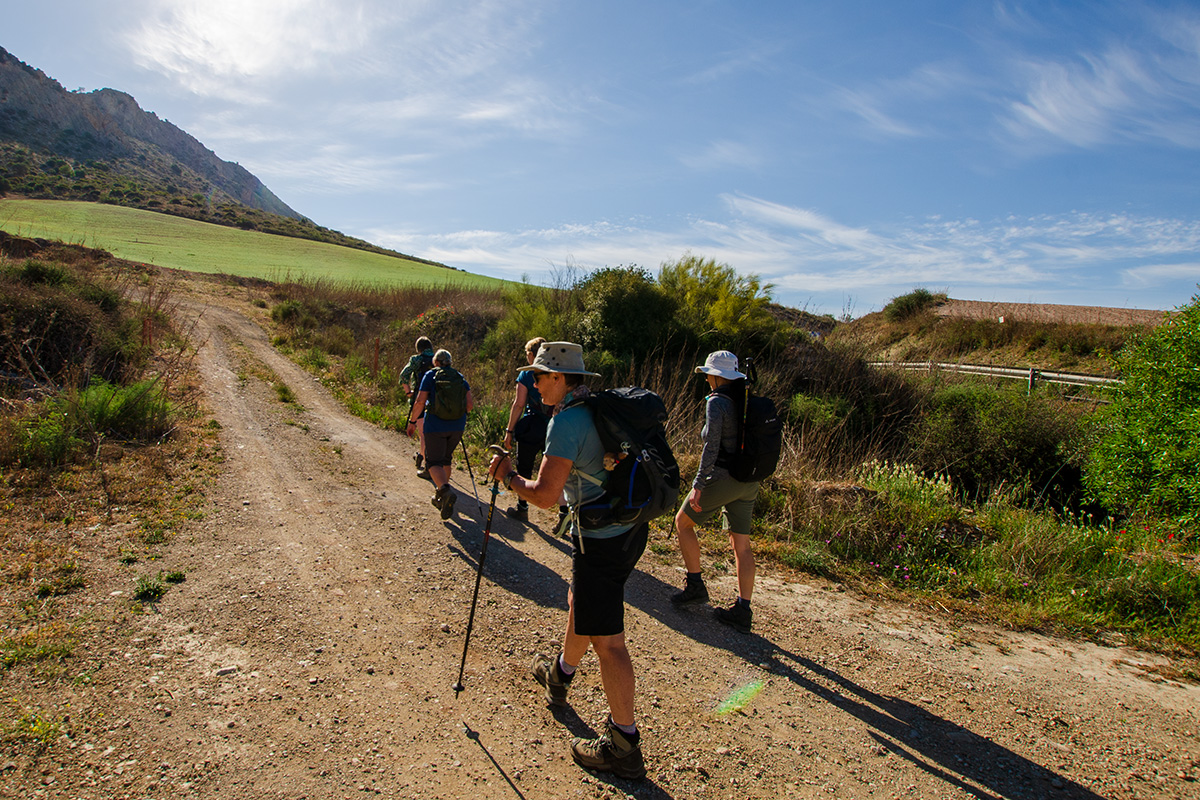Getting fit for your walking holiday by Susie Rea
In the run-up to a walking holiday, Phil often gets asked: “How fit do I need to be for this holiday?”; “How should I prepare for this holiday?”; “What exercises should I do?”, etc.
Even if you’re not one of the people asking, getting fit or fitter for your holiday is a good idea!
Why bother?
The best reason for improving fitness for your walking holiday is to increase your overall enjoyment: to climb the hills more easily, walk longer distances over multiple days, feel more stable on your feet when traversing rough ground and to feel pretty darn good at the end of each day whilst tucking into your tapas (ready for what the next day has in store!).
I already do some hillwalking; is that enough?
Regular hillwalking is a great start, but there are other activities that will enhance your performance on the hills, reduce your risks of injury and make you less prone to aches and pains. This article provides my top tips to power-up your hillwalking fitness.
Tip 1: Get out in the hills
Given you’ve booked this trip, I’m assuming you already do a fair bit of hillwalking, so this one is a no-brainer! Hillwalking is the most important preparation you can do for your Andalucían adventure. It gets your whole body used to the physiological demands of walking, improves your cardiovascular health and builds physical strength.
You can also use the time to focus on your technique, posture, breathing and how your kit fits. Aim to get out once a week, build up your distance to 8-10 miles and build up your ascents/descents to 1000-2000ft.
If you are short on time and can’t hillwalk each week, just get out when you can. Aim to get your daily step count up, take the stairs rather than lifts and stay active!
Tip 2: Get in some extra cardio
If you can only allocate time to one thing, do cardio! When we talk about ‘cardio,’ we are covering exercises that use and improve the function of the cardiovascular system (heart, blood and blood vessels) and the respiratory system (lungs and airways).
Hillwalking is a cardio activity relying on the ability to get the oxygenated blood to our muscles to keep us moving over long distances and up the hills. So, if you are hillwalking, you are already doing some ‘cardio’.
In addition to hillwalking, adding a couple of 20 to 30-minute cardio sessions per week will make a big difference. Your heart will become stronger and your lungs more efficient, providing more blood and oxygen around your body with each heartbeat. There are lots of types of cardio you can do: jogging, cycling, swimming, fast/power walking, etc.; pick something you enjoy!
Include a 5-minute warm-up, for example, walking for 5 minutes at the start of a run or going slow on your cycle at the start, this gets the blood flowing and oxygen around your body. Likewise, cool down at the end of your cardio, taking it slow for about 5 minutes. This helps your heart rate normalise and stops blood from pooling in your legs, which can make you feel light-headed.
If you already have a good level of fitness and no underlying health conditions, you could substitute one cardio session for a shorter ‘anaerobic’ workout like HIIT. This adds a real boost to your fitness levels and particularly helps going up steep hills. It’s not always easy to fit cardio sessions into our busy lives, but even regularly doing 10 minutes of cardio delivers benefits. This could be an online short HIIT session, or my personal favourites are going up and down the stairs for 10 mins (it’s a toughy!) or a more pleasurable kitchen disco!


Tip 3: Do resistance training
Resistance training is an exercise that works your muscles against external resistance to strengthen them. Not only does it strengthen your muscles, but it also strengthens and stabilises the anatomical scaffolding: bones, joints, tendons and ligaments, making them work better and be less prone to injury. You don’t need to be a bodybuilder or a powerlifter for hillwalking but there are exercises that make your body more prepared for the hills, terrain and distances.
Let’s consider some of the physiological demands of hillwalking:
- You need to propel your body forward when you hillwalk. It is common for walkers to lean forward, putting excess pressure through the front of the thighs and knees, this can cause knee pain, tight hip flexors and lower back issues. By using the muscles along the back line of the body more, you drive increased power and more efficient action – it requires a stronger bum, back of thighs & lower back.
- The front of your thighs are used heavily when going downhill; this action can cause pain or discomfort the next day, known as ‘DOMS’ (delayed onset muscle soreness). Exercising the front of your thighs in a way that mimics their lengthened state when going downhill strengthens them and reduces your chances of achy thighs!
- The uneven surfaces and descents mean you need to quickly stabilise your body so you don’t fall. The best way to improve this is to work on ‘core stability’. The core muscles are deep muscles wrapping around the torso, topped by the diaphragm, with the pelvic floor muscles at their base. These core muscles help in anchoring your centre of gravity, giving you the ability to balance yourself.
- It’s easy to slouch and let our shoulders drop forward as we fatigue through the day, this can lead to aches and pains in the neck, shoulders and upper back. Building stronger muscles in the mid & upper back reduce the slouch and the discomfort, as well as having a positive impact on your posture day-to-day.
Taking these demands into account, I have created my “Top 10 Resistances Exercises for Hillwalkers”. Try to do these twice a week. If you already do resistance training, focus your effort in the run-up to your holiday on core, backline of the body and legs.
Tip number 4: Stretch after walks & exercise
Post-exercise stretching is a key part of exercise; not only does it feel great, but it is also part of the Fitness ABC for some very good reasons. When you work your muscles, they contract and generally shorten; stretching helps them return to their normal pre-exercise length and stops them from getting tight and painful. Muscles that are tight are more prone to injury.
During exercise, waste products like lactic acid are produced, and stretching muscles at the end of your workout is a bit like wringing out a sponge, forcing waste products into the lymphatic system (the body’s natural drainage system). I recommend that you stretch immediately after hillwalking, cardio and resistance training. When we hill walk, it is normal to get tight across the chest, upper back, thighs, bum and calves, so stretches targeting these areas are vital.
See my “Top stretches for Hillwalkers”. They can all be done standing and sitting on a bench or in your car, so they are ideal when you are outside and can’t get on a mat. They should take no more than 5 minutes.
Download the 'Resistance Exercises for Hillwalkers' training program here.
Summary
Here’s a summary of my suggested approach:

Note: All exercises provided in this article are for information only and, if undertaken, are done so at your own risk.
 Susie is a Personal Trainer and Pilates Instructor based in York. She is an avid hillwalker with a passion to get others out walking and has enjoyed four walking trips to Andalucía.
Susie is a Personal Trainer and Pilates Instructor based in York. She is an avid hillwalker with a passion to get others out walking and has enjoyed four walking trips to Andalucía.








